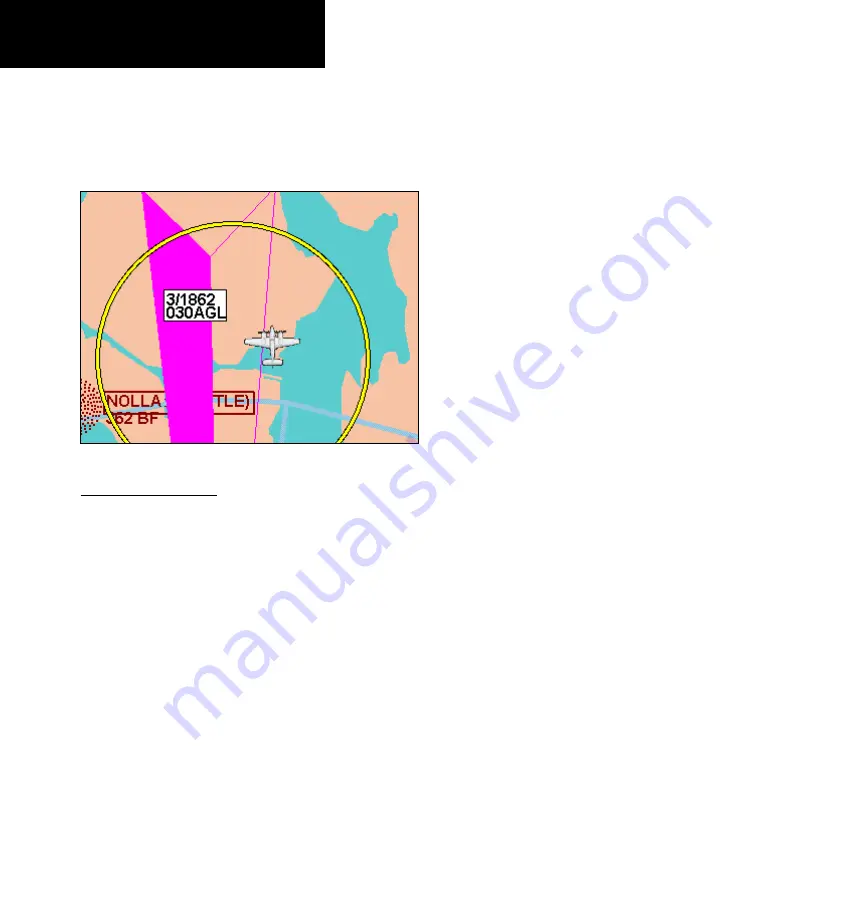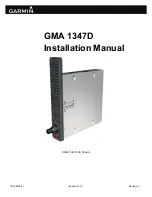
6
190-00607-02 Rev C
Detailed Operation
altitude. Press the
TFR Lbl
key to toggle the TFR
Identifier Labels on and off. TFRs are drawn on the FIS
page when provided by the FIS sensor and can not be
enabled or disabled. TFR text information is described
on page 66.
TFR Outline with TFR Number and Upper Altitude
nEXrAd description
WSR-88D weather surveillance radar or NEXRAD
(NEXt generation RADar) is a Doppler radar system
that has greatly improved the detection of meteoro-
logical events such as thunderstorms, tornadoes, and
hurricanes. An extensive network of NEXRAD stations
provides almost complete radar coverage of the conti-
nental United States, Alaska, and Hawaii. The unob-
structed range of each NEXRAD is 124 nautical miles.
NEXRAD Abnormalities
There are possible abnormalities regarding dis-
played NEXRAD images. Some, but not all, causes of
abnormal displayed information include:
• Ground Clutter
• Strobes and spurious radar data
• Sun strobes, when the radar antenna points directly
at the sun
• Military aircraft deploy metallic dust which can
cause alterations in radar scans
• Interference from buildings or mountains, which
may cause shadows
• Scheduled maintenance may put a radar off-line
NEXRAD Limitations
Certain limitations exist regarding the NEXRAD
radar displays. Some, but not all, are listed for the
user’s awareness:
• NEXRAD base reflectivity does not provide
sufficient information to determine cloud
layers or precipitation characteristics (hail vs.
rain, etc).
• NEXRAD base reflectivity is sampled at
the minimum antenna elevation angle. An
individual NEXRAD site cannot depict high
altitude storms at close ranges, and has no
information about storms directly over the
site.
• The resolution of displayed NEXRAD data is
2 kilometers. Therefore, when zoomed in on
the display, each square block is 2 kilometers.
The intensity level reflected by the square
will be the highest level sampled within the 2
kilometer square area.
NEXRAD Intensity
Colors are used to identify the different NEXRAD
echo intensities (reflectivity) measured in dBZ (deci-
bels of Z). “Reflectivity” is the amount of transmitted
power returned to the radar receiver. Reflectivity
(designated by the letter Z) covers a wide range of
signals (from very weak to very strong). So, a more
convenient number for calculations and comparison, a
decibel (or logarithmic) scale (dBZ), is used. The dBZ
values increase as the strength of the signal returned to
the radar increases. There are five gradations for rain,
three gradations for mixed rain and snow, and three
gradations for snow.
GDL 69/69A - FIS












































